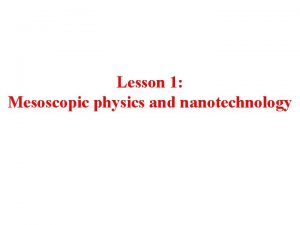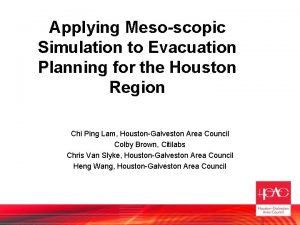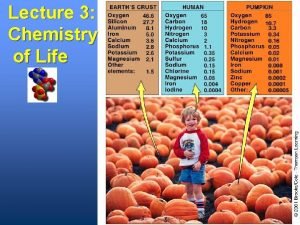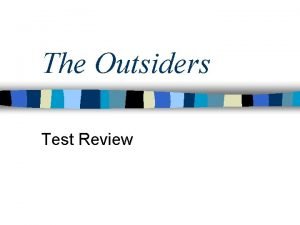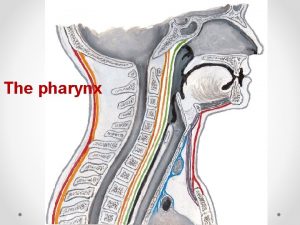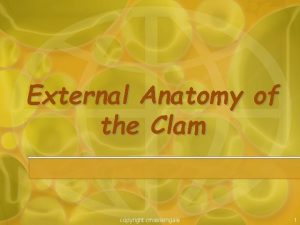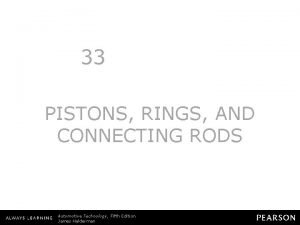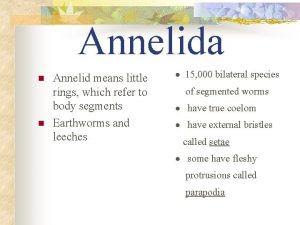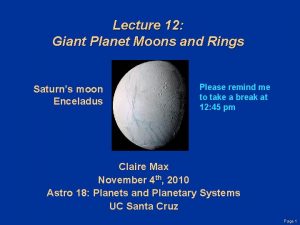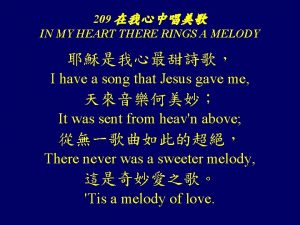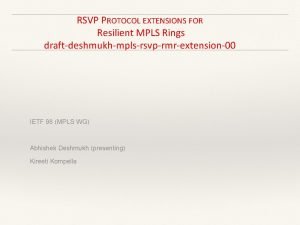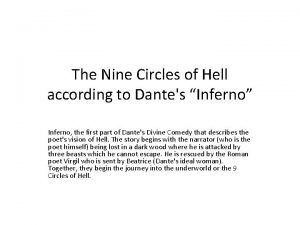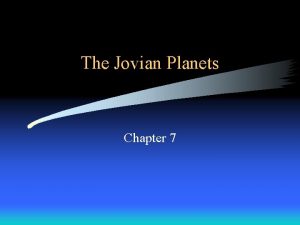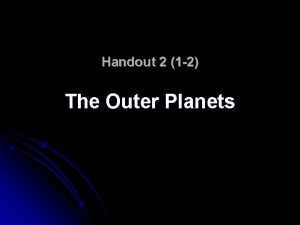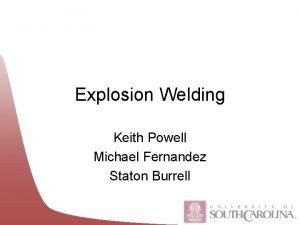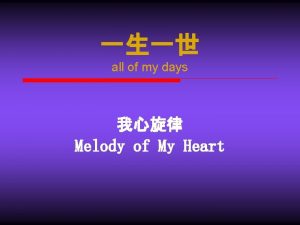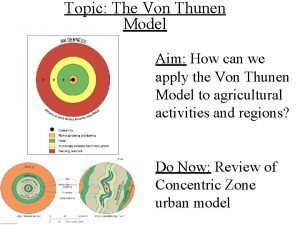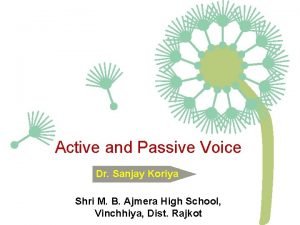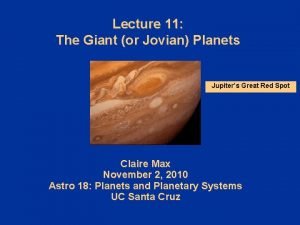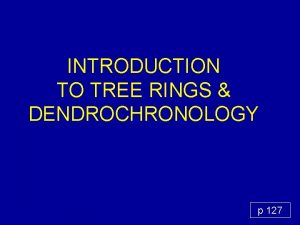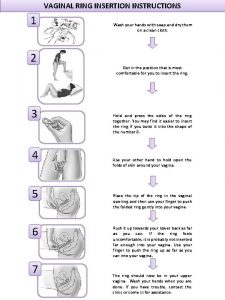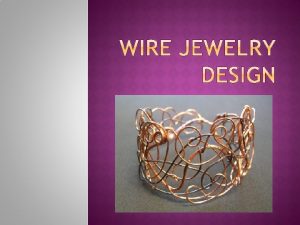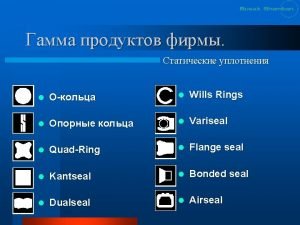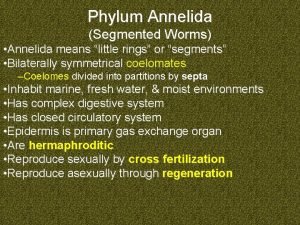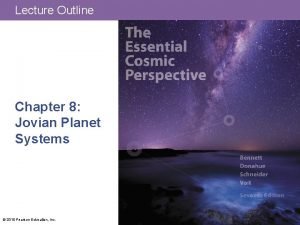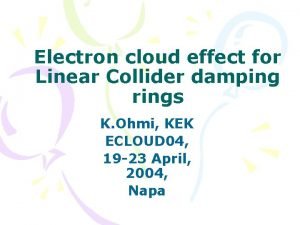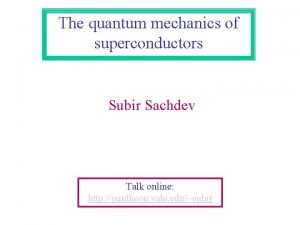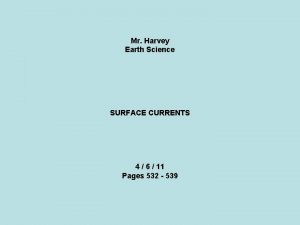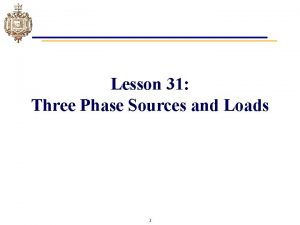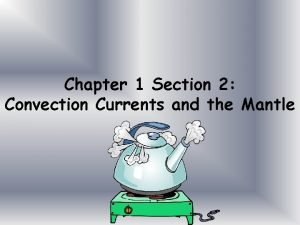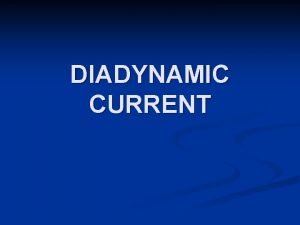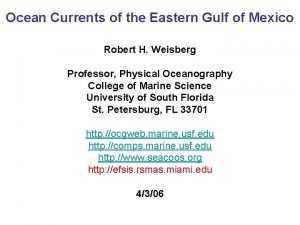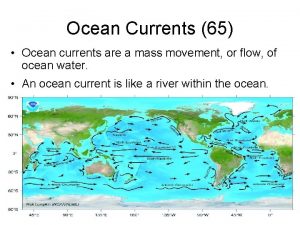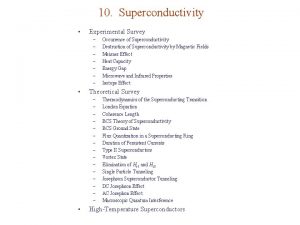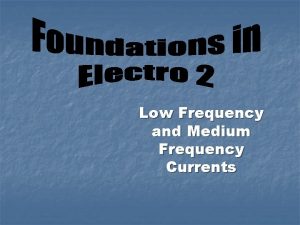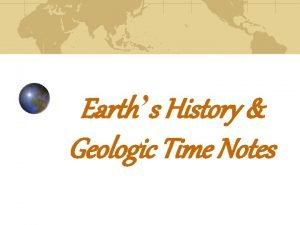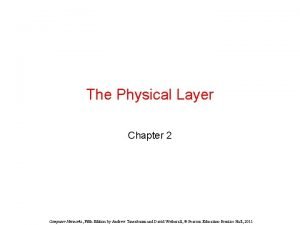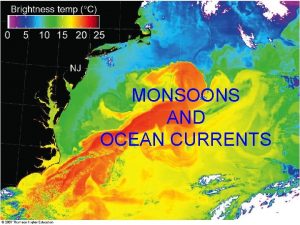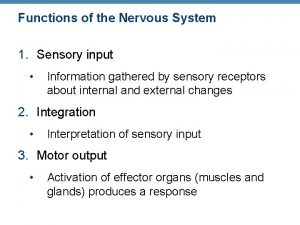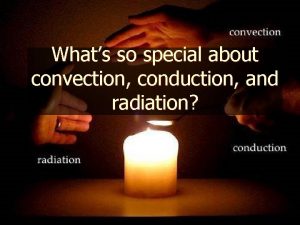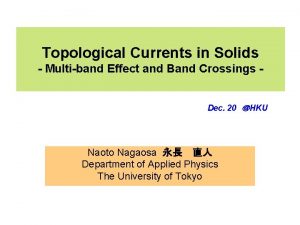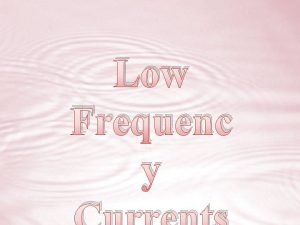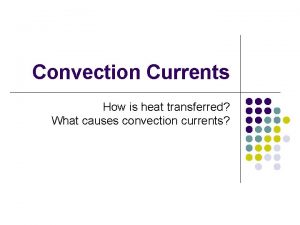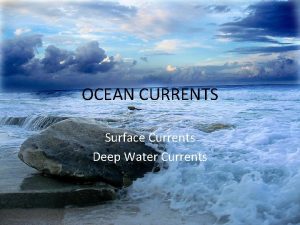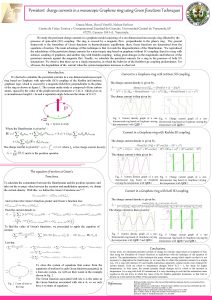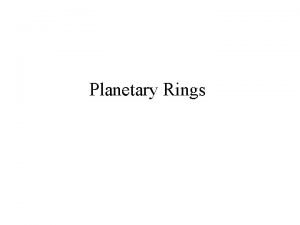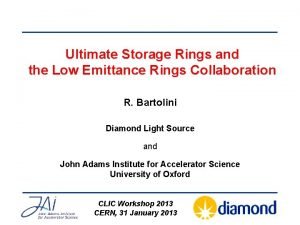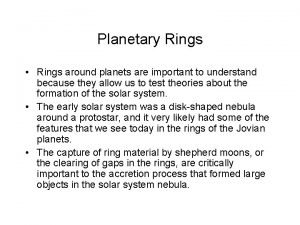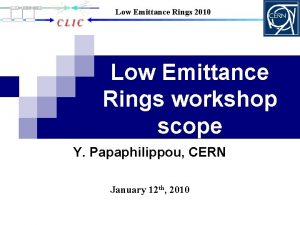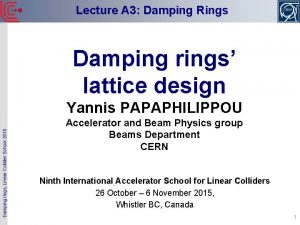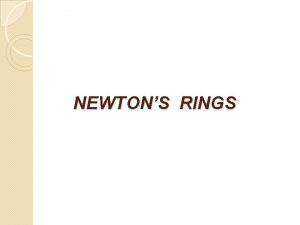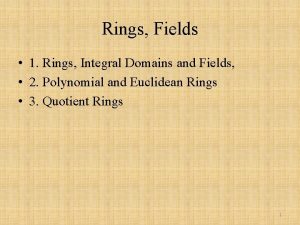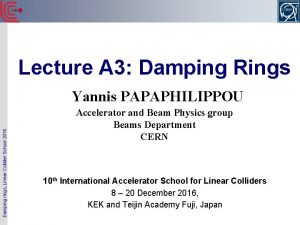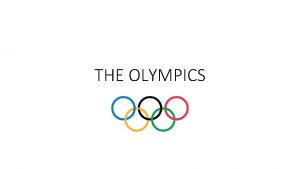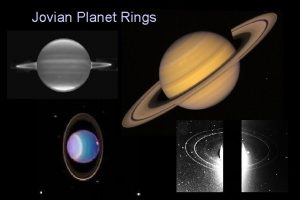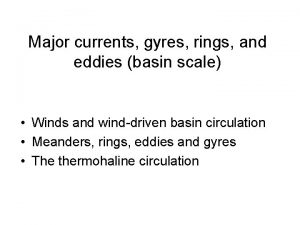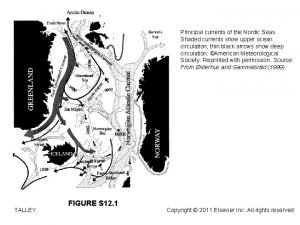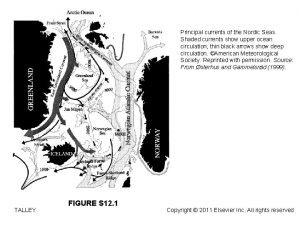Measuring Currents in Mesoscopic Rings From femtoscience to














































































- Slides: 78

Measuring Currents in Mesoscopic Rings From femtoscience to nanoscience, INT, Seattle 8/3/09

Classical conducting rings a Ha The current through a classical conducting loop decays with time as: I If R is very small, the current I can persist for a long time: not what we call “persistent” currents.

persistent currents in mesoscopic rings • require phase coherence and therefore directly reflect the quantum nature of the electrons • are a thermodynamic property of the ground state (for mesoscopic metallic rings, nonequilibrium currents decay with a decay time of L/R ~ picosecond) • can have flux periodicity h/e and higher harmonics a I

Measuring Currents in Mesoscopic Rings • technique • dirty aluminum rings: fluxoids – 1 order parameter – 2 order parameters • cleaner aluminum rings: fluctuations • gold rings: h/e-periodic persistent currents in normal metals • surprising spins

Measuring Currents in Mesoscopic Rings Measurements Hendrik Bluhm Nick Koshnick Julie Bert SQUIDs Martin Huber Funded by NSF, CPN, and Packard

Measuring persistent currents Ha a Apply field Measure current ?

Measuring persistent currents Ha a Apply field Measure magnetic field Difficulties: • Small signal • Large background

Scanning Magnetic Measurements 2 mm Advantages Location of pickup loop SQUID Sample Substrate • Background measurements • Measure many samples in one cooldown • Measure samples made on any substrate

SQUID susceptometer Front end SQUID pickup loop OUT IN DC feedback I-V R ~ 50 m field coil 12 m 100 -SQUID array preamp (NIST) substrate polished to create a corner at the pickup loop Low inductance “linear coaxial” shields allow for: shielding • optimized junctions - noise best when LI 0 = 0/2 feedback • low field environment near susceptometer core • reduced noise n ~ L 3/2 • independent tip design field coil 1 mm bias

Performance 2 mm susceptometry of a ring 5 m 10

White noise floor flux 0. 2 0/ Hz ring current 0. 2 n. A / Hz spin 200 B/ Hz ring current sensitivity S 1/2 I = MS 1/2 where M = mutual inductance ~ 0. 1 - 1 0/m. A spin sensitivity (conventional but optimistic conversion) Real experiments limited by 1/f noise background S 1/2 s (in B) = S 1/2 (in 0) x a/re where a = pickup loop radius = 2 m and re = classical electron radius = 2. 8 x 10 -9 m

Background elimination • Ring signal: 0. 1 0 • White noise: 0. 5 0/ Hz • Applied field: 45 0 in each pickup loop => need to eliminate background to 1 part in 109 Elimination procedure Residual backg. relative absolute 1 Symmetric sensor design with counterwound pickup loops. 10 -2 0. 5 0 2 compensation using center tap 10 -4 5 m 0 3 In-situ background measurement 10 -8 0. 5 0 4 Data processing 2 x 10 -9 0. 1 0 Step

Background measurement Susceptibility scans (In-phase linear response) Record complete nonlinear response by averaging over many sinusoidal field sweeps at each position. Raw signal after tuning Icomp (step 2) 0 Measurement positions: + background + signal o background • Compute (+) - (o) • Subtract ellipse (linear response)

Measuring Currents in Mesoscopic Rings • Technique • Dirty aluminum rings: fluxoids – 1 order parameter – 2 order parameters • Cleaner aluminum rings: fluctuations • Gold rings: h/e-periodic persistent currents in normal metals • Surprising spins

mesoscopic superconducting rings Energy n=0 n=1 n=2 GL: 0 1 2 / 0 Current = Fluxoid # Superfluid Density Superconducting Coherence Length / 0

Sample structure Fabrication: R - PMMA e-beam lithography. d w - E-beam evaporation of d = 40 nm Al: • • • Background pressure 10 -6 m. Bar Deposition rate ~1 Angstrom/sec ~10 min interrupt during deposition w = line width - Liftoff Deduced film structure: oxide

a-I data and models 0. 40 K Fit Data 1. 00 K = Fluxoid # Superfluid Density Superconducting Coherence Length 1. 35 K n=0 n=3 n = -3 1. 49 K 1. 524 K Hysteretic Response Described by Rate Equation High Temperature Response Well Described by Boltzmann Distributed Fluxoid States D = 4 micron, w = 90 nm, t = 40 nm, le = 4 nm

Anomalous Φa-I curves of 190 nm rings • Reentrant hysteresis • Transitions not periodic in Φa/ Φ 0 • Branches of Φa-I curves shifted by less than one Φ 0. • Unusual shape of non-hysteretic Φa-I curves. • Not an effect of averaging over many cycles. - - R = 1. 2 m Motivation for 2 -OP model - Single order parameter Two order parameters n - - - only one (monotonic) transition path connects two different metastable states. n 2 n 1 multiple transition paths exist

Anomalous Φa-I curves of 190 nm rings • Reentrant hysteresis • Transitions not periodic in Φa/ Φ 0 • Branches of Φa-I curves shifted by less than one Φ 0. • Unusual shape of non-hysteretic Φa-I curves. • Not an effect of averaging over many cycles. - - - Single order parameter Two order parameters n - - - only one (monotonic) transition path connects two different metastable states. n 2 n 1 multiple transition paths exist

Anomalous Φa-I curves of 190 nm rings • Reentrant hysteresis • Transitions not periodic in Φa/ Φ 0 • Branches of Φa-I curves shifted by less than one Φ 0. • Unusual shape of non-hysteretic Φa-I curves. • Not an effect of averaging over many cycles. - - Motivation for 2 -OP model - Single order parameter Two order parameters n - - - only one (monotonic) transition path connects two different metastable states. n 2 n 1 multiple transition paths exist

Anomalous Φa-I curves of 190 nm rings • Reentrant hysteresis • Transitions not periodic in Φa/ Φ 0 • Branches of Φa-I curves shifted by less than one Φ 0. • Unusual shape of non-hysteretic Φa-I curves. • Not an effect of averaging over many cycles. - - Motivation for 2 -OP model - Single order parameter Two order parameters n - - - only one (monotonic) transition path connects two different metastable states. n 2 n 1 multiple transition paths exist

Two-order-parameter GL - fits Fits to representative datasets. Summary of all data: coupling increases with w => stronger proximitization Tc, 1 w (nm) 100 120 190 250 320 370 # rings 2 6 7 14 1 5 2 -OP features None Soliton states only manifest in T-dep Tc, 2 oxide

Summary on 2 -OP rings • "Textbook" single-OP behavior observed for many Al rings. • Bilayer rings form a model system for two coupled order parameters with the following features: - metastable states with two different phase winding numbers, manifest in unusual Φa-I curves and reentrant hysteresis. - unusual T-dependence of x and l-2. • Extracted parameters for two-order-parameter Ginzburg-Landau model with little a priori knowledge.

Measuring Currents in Mesoscopic Rings • Technique • Dirty aluminum rings: fluxoids – 1 order parameter – 2 order parameters • Cleaner aluminum rings: fluctuations • Gold rings: h/e-periodic persistent currents in normal metals • Surprising spins

Little-Parks effect Energy In a thin-walled sample near Tc, kinetic energy can exceed the condensation energy: well-known “Little-Parks Effect” 0 n=1 1 2 tin cylinder ~1 micron diameter 37. 5 nm wall thickness n=2 / 0

Previously observed anomalous resistance in Little-Parks regime: Liu et al. Science 2001 150 nm diameter Al cylinder wall thickness 30 nm reported x(T) = 161 nm at T = 20 m. K from Hc||(T) R=0 => global phase coherence regions separated by finite-R regions predicted by de. Gennes, 1981

Previously observed anomalous diamagnetic susceptibility (Zhang and Price, 1997) Zhang and Price, 1997 (1 ring, zero-field response only)

Ring fabrication PMMA Al PMMA silicon oxide Samples silicon substrate e-beam evaporation and liftoff R w d R = 0. 5 – 2 m d = 70 nm w = 30 – 350 nm linewidth 2 nd generation: Background pressure <10 -7 m. Bar Deposition rate ~3. 5 nm/sec le = 30 nm on unpatterned film le ~ 19 nm small features with PMMA (inferred) 1 st generation samples le = 4 nm + accidental layered structure for w > 150 nm model system for 2 coupled order parameters. Bluhm et al, PRL 2006.

Applied Flux Dependence d = 60 nm w = 110 nm A-C: R = 350 nm Tc = 1. 247 K (fitted) D: R = 2, 000 nm Tc = 1. 252 K (fitted) In von Oppen and Riedel, the geometrical factors enter only through Ec and

Our Results • disagree with previous results • agree with GL-based theory (von Oppen and Riedel) Zhang and Price, 1997 (1 ring) Present Work (15 rings measured, 4 rings shown)

Comparison of “Large” and “Small” Rings Blue: Data Red: Theory Green: Mean field The Little-Parks Effect is washed out by fluctuations when >1

Summary on Fluctuations in Superconducting Rings • Agreement with fluctuation theory developed by Riedel and von Oppen. – Contrary to previous results, we find no anomalously large susceptibility at zero field. – Fluctuations in the Little-Parks regime ( ) are large. • No evidence for inhomogeneous states, but they could be contributing to the fluctuation response. • Rings with largest fluctuation regimes could not be compared to theory in the LP regime due to numerical intractability. • Little-Parks Effect washed out by fluctuations when >1

Measuring Currents in Mesoscopic Rings • Technique • Dirty aluminum rings: fluxoids – 1 order parameter – 2 order parameters • Cleaner aluminum rings: fluctuations • Gold rings: h/e-periodic persistent currents in normal metals • Surprising spins

Pure 1 -Dimensional Ring E =0 EF Typical current T = 0, disorder = 0 I T>0 / 0 Büttiker et al. , Phys. Lett. 96 A (1983) Cheung et al. , PRB 37 (1988) periodic in h/e, including higher harmonics -k +k

Ensembles vs. single rings Idea: Measure many (N) rings at once to enhance signal. h/2 e Previous measurements: (Levy, Deblock, Reulet) • Magnitude ~ Ec/f 0 - factor of a few larger than expected • Sign not well understood • Temperature dependence as expected h/e Need to measure several individual rings

Diffusive rings mean free path << ring circumference Response depends on disorder configuration Ih/e has a distribution of magnitudes and signs consider ensemble averages …. Thouless energy: Riedel and v. Oppen PRB 47 (1993) Related contributions: Cheung and Riedel. , PRL 66 (1989) Determined by interactions

Previous measurement - ballistic Single ballistic Ga. As ring: (L > le ) Mailly et al. , PRL 70 (1993) Gates Calibration coil Junctions 2 DEG Pickup • Magnitude of h/e signal agrees with theoretical expectation • Gates allow background characterization.

Previous measurement - diffusive Observed periodic component in 3 rings: 60 Ec /f 0 12 The Ec /fresult 0 220 Ec /f 0 Chandrasekhar et al. , PRL 67 (1991) Raw signal Fitted background subtracted. of the only previous measurement of individual diffusive rings (in 1991) was two Background always orders ofnot magnitude larger than expected! well behaved.

Sample R Fabrication Optical and e-beam lithography, e-beam evaporation (6 N source), liftoff Diffusivity: Mean free path: Dephasing length D = 0. 09 m 2/s le = 190 nm Lj = 16 m w d d = 140 nm w = 350 nm R = 0. 57 - 1 m Grid for navigating sample 0. 5 m I ~ 10 A, 10 GHz optical image magnetic scan ac Pring ~ 10 -14 W

Expected signal (excludes factor 2 for spin because of spin-orbit coupling) Riedel and v. Oppen PRB 47 (1993) Our expected T = 0 SQUID signal is independent of L: ring - SQUID inductance

Response from 15 rings R = 0. 67 m linear component subtracted (in- and out of phase)

Mean as background Assume: Signal = background-response + persistent current similar for all rings: suspect spin response Ih/e = 0 = -1 0 - 1 =…. -1 0 1

Variations in ring response data - data = Sine-fits: fixed period fitted period data Expected: Ih/e 2 1/2 M = 0. 1 0 (Tel = 150 m. K) Ih/e 2 1/2 M = 0. 12 0 = 0. 9 n. A M

Temperature dependence Difference of signals from two rings with a large and opposite response Þ Any common background is eliminated Fair agreement with theory:

Is the flux-periodic signal from persistent currents? Consistency Checks: see also recent results by A. Bleszynski. Jayich, J. Harris, and coauthors Expected distribution of magnitudes Expected temperature dependence Periodic signal does not appear in larger (R = 1 m) rings § 6 rings measured § larger Ec => steeper falloff with temperature § better coupling to SQUID => larger electron temperature Periodic signal does not depend on frequency (in 2 rings) Amplitude of periodic signal does not depend on sweep amplitude. Causes for Doubt: v Zero-field anomaly (from spins? ) not fully understood v Electron temperature of isolated rings

Measuring Currents in Mesoscopic Rings • Technique • Dirty aluminum rings: fluxoids – 1 order parameter – 2 order parameters • Cleaner aluminum rings: fluctuations • Gold rings: h/e-periodic persistent currents in normal metals • Surprising spins

Anomalously Large Spin Response Susceptibility Image Optical Image (Linear in-phase term) • Susceptibility signal suggest an area spin density of s = 4 x 105 m-2 • Observed on every film studied: even on gold films with no native oxide 45 m • Similar to excess flux noise observed in SQUIDs and superconducting qubits

Electron temperature Linear susceptibility I ~ 10 A, ~10 GHz heatsunk ring ac Pring ~ 10 -14 W isolated ring Expect Tel ~ 150 m. K 0. 03 • • Tel 150 m. K 0. 1 0. 5 1/T dependence of paramagnetic susceptibility => spins heat sinking effective => spins equilibrate with electrons origin of spin signal not understood Likely related to aperiodic component in nonlinear response (subtracted mean)

Comparative Magnitude and T-dependence Linear Paramagnetic Susceptibility • Bare Si has no paramagnetic response (from height dependence). • Gold films have a larger response than Al. Ox films • Response from layered structures not additive. • 140 nm thick e-beam defined Au rings and heatsink wires, evaporated 1. 2 nm/s on Si with native oxide, 6 N purity source

Spin Interaction with Conduction Electrons 1. Spins do not cause electronic decoherence in the ring • 2. Weak localization measurements show long coherence times, suggesting ~0. 1 ppm or less for concentration of spins causing decoherence. Spins are well enough coupled that they are thermalized with the conduction electrons from the ring • • Josephson oscillations from the SQUID heats isolated rings, and poor electron-phonon coupling prevents electrons from cooling Response from isolated rings saturates at ~150 m. K: calculated electron temperature based on Josephson heating 5 m Heat Sunk Ring 0. 5 m Isolated Ring

Out of Phase and Nonlinear Susceptibility Linear Out of Phase Out of phase component f 2 is ~two orders of magnitude smaller than in phase component Existence of out-of-phase component implies magnetic noise from spins Nonlinear component should provide clues to spin dynamics

Spin Density Inferred from Magnitude Areal density: For g = 2 and J = 1/2, the signal of the purest gold film corresponds to an area density 4 · 1017 spins/m 2 or 4 · 105 spins/micron 2 Volume density, if in gold rather than surface or interface: • About 60 ppm if in the gold itself • 3 ppm for g 2 J(J+1) = 35

Comparison with 1/f Noise Koch, Di. Vincenzo and Clarke Model • 1/f noise is generated by the magnetic moments of electrons trapped in defect states • Electron spin is locked while it occupies the trap (Kramer Degenerate Ground State) E • Trapping energies have broad distribution compared to k. BT • Uncorrelated changes in spin direction yield a 1/f power spectrum • Expected defect density 5 x 105 m-2 } hw Koch, Di. Vincenzo and Clarke PRL 98, 267003 (2007)

Measuring Currents in Mesoscopic Rings • Technique – RSI 79, 053704 (2008). – APL 93, 243101 (2009). • Dirty aluminum rings: fluxoids in 2 -OP ring – PRL 97, 237002 (2006). • Cleaner aluminum rings: fluctuations in LP regime – Science 318 , 1440 (2007). • Gold rings: h/e-periodic persistent currents – PRL 102, 136802 (2009). • Surprising spins – PRL 103, 026805 (2009).

next generation pickup loops: 500 nm spin sensitivity < 100 B/rt-Hz 10 m

next generation pickup loops: 500 nm spin sensitivity < 100 B/rt-Hz 10 m

Fabrication & Deposition: Sample I (C) (B) (A) 80 nm e-beam defined Au wire grid and bond pads – 7 0/m. A 6 5 Evaporated on Si with native oxide, source purity unknown (B) 50 nm thick Al. Ox patterned using optical lithography (C) Rings and wires e-beam evaporated at a rate of 1. 2 nm/s from 6 N Au 4 3 2 Flux detected by pick up loop 1 Applied Excitation by field coil 0

Fabrication & Deposition: Sample II • Redesigned after (Sample I) to have smaller spin susceptibility • 140 nm thick e-beam defined Au rings and heatsink wires – 0/m. A 15 m 10 • Evaporated 1. 2 nm/s on Si with native oxide, 6 N purity source 100 nm thick optically defined heatbanks and current grid – 7 nm Ti sticking layer 5 0 Flux detected by pick up loop Applied Excitation by field coil

Conclusions and Outlook • In mesoscopic gold rings, we observe an h/eperiodic magnetic signal whose magnitude and temperature are consistent with theoretical expectations for persistent currents. • We also observe what appears to be an unexpectedly high density of nearly free spins in gold as well as in other samples. 0. 2 K 0. 1 K 0. 035 K

Observation of persistent currents in thirty metal rings, one at a time *see also recent results by A. Bleszynski-Jayich, J. Harris, and coauthors

Samples measured Sample structure # rings measured Biggest problem Ag on Al. Ox Au on Si. Ox 8 7 Variations in susceptibility of metal, high base T Transient response from Al. Ox, nonlinear response 2 Au on Si 33 Bad film Nonlinear adhesion, response high base T

Smaller rings R = 0. 57 m Raw nonlinear response Mean Raw data - mean Ih/e 2 1/2 M = 0. 07 0

Signal from heatsunk rings Linear response • paramagnetic • ~1/T dependence => spins Nonlinear response • Likely due to relaxation effects • spatial dependence same as for linear (+) - (o) - linear component (~ 120 0)

Heatsunk rings • Measured 4 (R = 0. 8, 1 m) Raw signal (linear in-phase subtracted) • Found no periodic, but large aperiodic response • Flux captured in heatsink might break periodicity • Largest plausible amplitude 0. 2 0 – ellipse (linear out-of-phase subtracted) – phenomenological “step”

Pure 1 -Dimensional Ring E 0 < >=f<o 0 f/2 o/2 EF I 0 1 /f 0 -k +k => Typical current Effect of temperature, disorder: T=0 I Büttiker et al. , Phys. Lett. 96 A (1983) T>0 /f 0 Cheung et al. , PRB 37 (1988)

What is the background? • Hysteretic • Frequency dependent (10 – 300 Hz) -1 • Decreases at higher T • Also seen in other metal structures => Suspect nonequilibrium spin response 0 1

Frequency and amplitude dependence Nonlinear signals from two rings with a large and opposite response at different field sweep frequencies. Þ Frequency dependent background Pair wise difference is h/e periodic and frequency independent Difference signal at different sweep amplitudes

Conclusion on Spins • Spin susceptibility with 1/T dependence measured in micropatterened thin films – Corresponds to an area spin density of ~4 x 105 m-2 – Agreement with what’s inferred in SQUIDs • Strong metallic response – Spins related to silver and gold rather than silicon or native silicon oxide – (Spins observed on other insulators, eg Al. Ox, thermal silicon oxide) • Signals from layered structures are not additive – Possible interactions between layers • Increase of out of phase response with frequency – Flux noise varies slower than 1/w • Probable connection with superconducting films • Scanning SQUID susceptometry excellent technique for further investigation of flux noise

Conclusion and outlook • Measured magnetic response of 33 mesoscopic gold rings, one ring at a time. • Observed oscillatory component with period h/e and different sign and amplitude in different rings. • Typical magnitude and temperature dependence are consistent with expected typical persistent current, Ih/e 2 1/2. • Also find a background response that is most likely

next generation pickup loops: 500 nm spin sensitivity < 100 B/rt-Hz 10 m

SQUID I 0 Magnetometer I 0 I 0 Low inductance “linear coaxial” shields allow for: • optimized junctions - noise best when LI 0 = 0/2 • low field environment near susceptometer core • reduced noise n ~ L 3/2 • independent tip design Applied field ~ 10 s of 0 Desired signal ~0. 1 0 Requires background elimination to 1 part in 108 Gradiometer Susceptometer

Typical Images 2 mm susceptometry of a ring 5 m magnetometry of a vortex in a bulk superconductor 72

SQUID sensitivity

Comparison of le = 4 nm and le = 19 nm 0. 40 K Fit Data 1. 00 K 1. 35 K n=0 n=3 n = -3 1. 49 K 1. 524 K le = 19 nm D = 1 micron w = 75 nm t = 70 nm

Two-order-parameter GL - model For n 1 = n 2 = 0: i(x) = const. => solve numerically to get fit model T <T ~ c 1=> x 1 large, strong pair breaking. Fluxoid transition inhibited by coupling to other component.

Hysteretic curves - data and model Data Model Assume transition occurs when activation energy < ~ 5 k. BT. Simple Explanation T~ <Tc 1=> x 1 large. 1 transitions earlier than 2 if coupling weak enough. => formation of metastable states with n 1 n 2

Summary on 2 -OP rings • "Textbook" single-OP behavior observed for many Al rings. • Bilayer rings form a model system for two coupled order parameters with the following features: - metastable states with two different phase winding numbers, manifest in unusual Φa-I curves and reentrant hysteresis. - unusual T-dependence of x and l-2. • Extracted parameters for two-order-parameter Ginzburg-Landau model with little a priori knowledge.

Few-ring experiments • 30 Au rings • Reasonable amplitude • I or I 2 ? Jariwala et al. , PRL 86 (2001) 16 connected Ga. As rings Rabaud et al. , PRL 86 (2001)
 Mesoscopic
Mesoscopic Mesoscopic simulation
Mesoscopic simulation What is a deep current
What is a deep current Sports alliteration examples
Sports alliteration examples Lipids made up of rigid carbon rings
Lipids made up of rigid carbon rings A shot rings throughout europe
A shot rings throughout europe Planet click
Planet click Exposition in the outsiders
Exposition in the outsiders Stylopharyngeus
Stylopharyngeus Side rails comfort device
Side rails comfort device External anatomy of a clam
External anatomy of a clam Sharroky hollie rings of culture
Sharroky hollie rings of culture Moore's law
Moore's law What two things do tree rings indicate
What two things do tree rings indicate Pistons rings and connecting rods
Pistons rings and connecting rods Means little rings
Means little rings Lipids made up of rigid carbon rings
Lipids made up of rigid carbon rings Why do jovian planets have rings
Why do jovian planets have rings Wordle 209
Wordle 209 Adenoameloblastoma
Adenoameloblastoma Mpls rings
Mpls rings Dante's hell levels
Dante's hell levels Facts about jupter
Facts about jupter Eighth planet from the sun
Eighth planet from the sun Cladder rings
Cladder rings Fullerene rings
Fullerene rings Lipids made up of rigid carbon rings
Lipids made up of rigid carbon rings Wordle 27/1
Wordle 27/1 Von thunen model rings explained
Von thunen model rings explained The peon rings the bell passive voice
The peon rings the bell passive voice Jupiter magnetosphere
Jupiter magnetosphere Complacent tree rings
Complacent tree rings Vulva rings
Vulva rings What does citius altius fortius mean
What does citius altius fortius mean Personal ornaments such as necklaces, rings, or bracelets.
Personal ornaments such as necklaces, rings, or bracelets. Wills rings
Wills rings Means little rings
Means little rings Rings codes and conventions
Rings codes and conventions An arrangement of fascicles in concentric rings is called
An arrangement of fascicles in concentric rings is called The fascicles are arranged in concentric rings
The fascicles are arranged in concentric rings Why do jovian planets have rings
Why do jovian planets have rings Why does saturn have rings
Why does saturn have rings Larynx in respiratory system
Larynx in respiratory system A shot rings throughout europe
A shot rings throughout europe Are jovian planets more dense than terrestrial
Are jovian planets more dense than terrestrial Lord of the rings sound design
Lord of the rings sound design Conventions of a poster
Conventions of a poster Book answer
Book answer Yaggis cheese house
Yaggis cheese house This phylum name means “little rings”
This phylum name means “little rings” Electron cloud rings
Electron cloud rings Three rings of responsibility
Three rings of responsibility Persistent currents
Persistent currents What is the primary cause of surface currents
What is the primary cause of surface currents Line currents
Line currents Convection currents definition
Convection currents definition Hvpgc
Hvpgc What is the primary driving force of surface ocean currents
What is the primary driving force of surface ocean currents Electromagnet
Electromagnet Ocean currents gulf of mexico
Ocean currents gulf of mexico Cause of currents
Cause of currents Define the survey of superconductor
Define the survey of superconductor Malleable metal electrode
Malleable metal electrode Cenozoic mammals
Cenozoic mammals Ocean currents vocabulary
Ocean currents vocabulary Type of currents
Type of currents What causes wind to blow brainpop
What causes wind to blow brainpop Visualizing magnetic field
Visualizing magnetic field Electric currents and magnetic fields
Electric currents and magnetic fields Ocean currents waves and tides
Ocean currents waves and tides Convection currents
Convection currents Ocean currents
Ocean currents Conducts local currents toward the soma
Conducts local currents toward the soma Whats convection currents
Whats convection currents What factors shape the climate in canada
What factors shape the climate in canada Currents the band
Currents the band The wind stirs up _____ currents.
The wind stirs up _____ currents. What are low frequency currents
What are low frequency currents A. what causes convection currents?
A. what causes convection currents?
